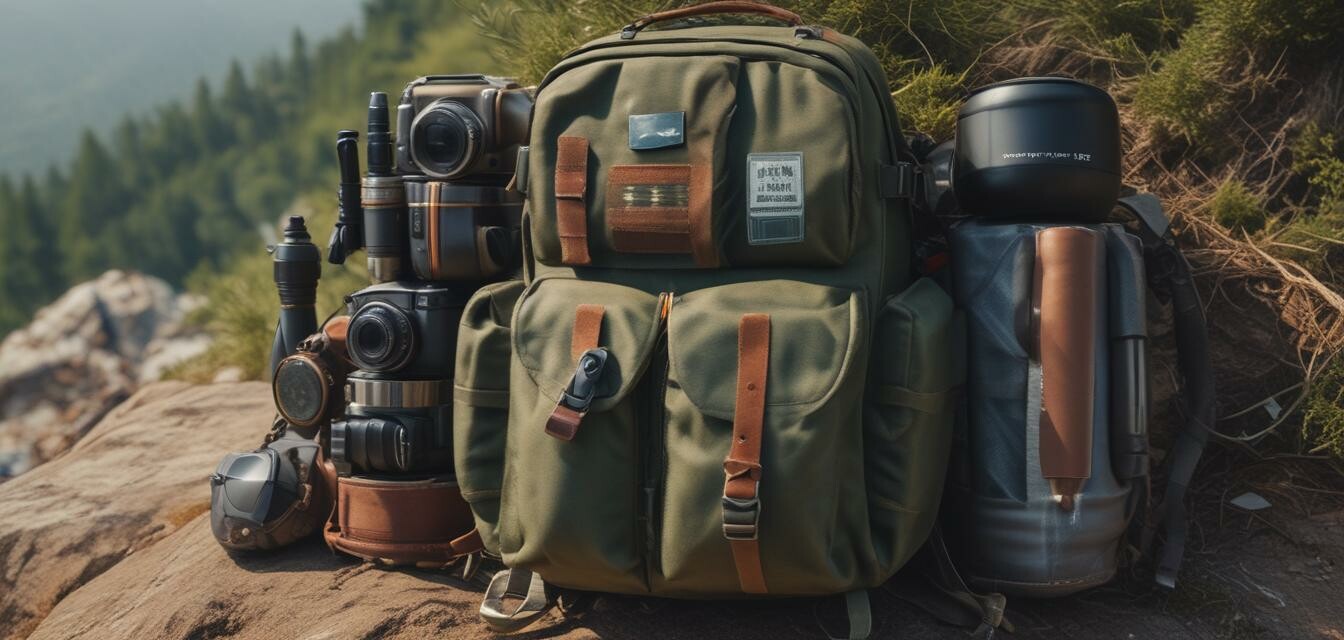
Best Practices for Organizing Your Backpack
Key Takeaways
- Prioritize accessibility by putting frequently used items at the top.
- Utilize compartments and pockets for better organization.
- Packing by category can help in finding gear easily.
- Weight distribution is essential for balance and comfort.
- Regularly reassess and clean your backpack to maintain organization.
When planning your next hiking or day trip, one of the key elements of a successful adventure is an organized backpack. Efficient organization not only makes it easier to find what you need when you need it but also helps in maintaining balance and comfort while you carry your gear. Here, we’ll delve into some best practices for organizing your backpack so that you can enjoy every outing to the fullest.
Why Backpack Organization Matters
Whether you're out on a short day hike or preparing for a longer trip, how you organize your backpack can significantly affect your overall experience. Clutter can lead to wasted time and energy, while a well-organized bag allows for ease of movement and access. Here are some additional reasons why it is crucial:
- Efficiency: Quickly find your items without rummaging through your bag.
- Safety: Keep essential items, like first aid kits, readily available.
- Comfort: A balanced pack reduces strain on your back and shoulders.
Best Practices for Organizing Your Backpack
1. Prioritize Accessibility
One of the first steps in backpack organization is determining which items you'll use the most frequently. These should be packed where they can easily be reached.
- Gear like snacks, water bottles, and maps should be accessible without digging.
- Use top pockets for smaller items that might need to be accessed quickly.
2. Use Compartments Wisely
Most backpacks come with a variety of pockets and compartments. Be sure to take advantage of them:
- Main compartment: Reserve this for bulkier items.
- Side pockets: Ideal for water bottles and other slender items.
- Front pocket: Great for quick-access items like snacks and a small first aid kit.
3. Pack by Category
Organizing your items based on categories can improve your efficiency:
- Clothing: Pack clothing items in one section or a packing cube.
- Food and Cooking: Keep cooking gear and food together for easy access when it's time to eat.
- First Aid and Safety: Always ensure this is easily accessible.
4. Balance Your Load
Weight distribution is essential for a comfortable experience. Here’s how:
- Put heavier items closer to your back and near the center of the bag.
- Distribute weight evenly across both sides of the backpack.
5. Regularly Clean and Reassess
A well-organized backpack requires maintenance:
- Take time each month to reassess and sort through your items.
- Remove unnecessary items that might add weight.
- Clean your backpack to keep it in good condition.
Tools and Accessories to Help You Organize
Investing in some organizational tools can help immensely:
| Tool | Description | Benefits |
|---|---|---|
| Packing Cubes | Small containers used to separate clothing and gear. | Keeps items tidy and makes it easier to find what you need. |
| Compression Sacks | Sacks that reduce the bulk of sleeping bags or clothing. | Maximizes space and keeps your bag streamlined. |
| Accessory Pouches | Small bags for organizing smaller items like toiletries or electronics. | Prevents smaller items from getting lost. |
Conclusion
Organizing your backpack may seem like a small detail, but it plays a crucial role in the success of your outdoor adventures. By prioritizing accessibility, using compartments effectively, packing by category, balancing your load, and regularly maintaining your backpack, you'll ensure a smoother, more enjoyable experience in the great outdoors.
Tips for Beginners
- Start packing a day or two in advance to avoid last-minute stress.
- Practice loading and unloading your backpack several times before your trip.
- Label compartments if necessary to make finding gear easier.
Pros
- Improved access to gear.
- Better weight distribution leads to less fatigue.
- Enhances overall safety during outdoor activities.
Cons
- Initial organization might take time to set up.
- Some accessories may add weight to the backpack.
For more tips on packing efficiently for your adventures, explore our Outdoor Adventure Tips category.
By following these best practices, not only will you have a well-organized backpack, but you'll also be better prepared for whatever comes your way! To dive deeper into selecting the right backpack for your journey, check our Buying Guides to narrow down your options.